There are a great number of clean room applications where steady air pressure and/or an exceptionally clean air environment are an absolute necessity. These situations range from healthcare to manufacturing to technology R&D. Examples include:
- Biological labs
- Electronic products manufacturing plants
- Hospital isolation rooms
- Hospital operating rooms
- Hospital critical care units
- Pharmaceutical plants
- R&D laboratory clean rooms
- Toxic waste isolation tents
- Wafer fabrication facilities
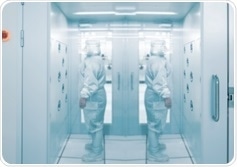
Image Credit: Superior Sensor Technology
Some of the applications mentioned here require a room that maintains a higher or lower pressure compared to the surrounding ambient environment. If the isolated room has greater air pressure, it is known as a positive pressure room. If the isolated room has lower air pressure, then it is considered a negative pressure room.
In a positive pressure room, outside air cannot enter while the air from the room can escape freely. This is achieved by having fans or filters blow air into an appropriately sealed room instead of air from the ambient environment.
This factor stops any contamination from the ambient environment from entering the room. Positive air pressure is frequently found in pharmaceutical plants, hospital operating rooms, laboratory facilities, wafer fabrication facilities, etc.
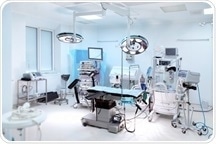
Figure 1. Hospital Operating Room. Image Credit: Superior Sensor Technology
Conversely, the air pressure in a negative pressure room is maintained lower than the adjacent environment through a ventilation system. The design of this ventilation system allows ambient air to enter the room, but air from within the room is extracted to a specific destination.
These types of isolation rooms are commonly found in hospital environments where the patient is afflicted by an airborne communicable disease such as COVID-19 or tuberculosis. These types are rooms are also used to mitigate the spread of dangerous chemicals in factories and labs.
Negative pressure rooms are of extreme importance when it comes to protecting staff and other patients as well as stopping the general spread of diseases or other airborne contaminants.
Beyond the extent of air pressure, a number of laboratories and manufacturing facilities need a clean production environment where airborne particles, humidity, temperature and air flow can be carefully controlled and measured.
These facilities must preserve a set of specific parameters to make sure the surrounding environmental conditions do not jeopardize product research, development or production.
Since 2001, these clean rooms have been assessed against the ISO 14644-1 standard that categorizes them by the maximum acceptable number of particles by size in the air per cubic meter.
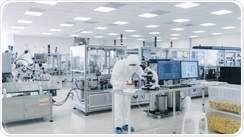
Figure 2. R&D Clean Room. Image Credit: Superior Sensor Technology
The role of differential pressure sensors in clean and isolation rooms
Differential pressure sensors measure the difference in air pressure or air particles from two different sources. As such, differential pressure sensors play a key role in clean rooms and similar applications where preserving stringent pressure differentials is central to preventing contamination.
For example, fluctuations in either air quality or pressure when someone enters a positive pressure room can influence the effectiveness of what is being examined.
As the purpose of the clean room is to preserve a fixed air pressure and/or eradicate contamination by dirt particles, some of which could contain microorganisms or toxins, measuring precise differential pressure levels guarantees that clean rooms operate as intended.
As such, it is crucial to carefully measure and monitor pressure both inside and outside of the clean room to verify that the differential is held within the appropriate range.
However, like the majority of electromechanical devices, differential pressure sensors are vulnerable to numerous external factors, including noise, humidity, temperature and physical positioning.
Differential pressure sensors that can mitigate the effect of external factors will offer the most accurate differential readings and preserve the effectiveness of a clean or isolation room.
Superior Sensor’s technology advantage
Superior Sensor Technology's proprietary NimbleSenseTM architecture is the industry’s first System-in-a-Sensor integrated platform. Introducing a highly differentiated advanced pressure sensing system with the capability to incorporate optional building blocks allows Superior Sensor to combine the greatest level of accuracy and reliability with application exclusive features.
With novel technology deployed in Superior’s HV and ND Series of differential pressure sensors, Superior’s products deliver several measurement advantages for clean rooms, isolation rooms and other air quality applications.
Highest levels of accuracy
Sensor accuracy is absolutely vital when making sure clean rooms and isolation rooms are correctly sealed. The ability to identify even the smallest of leaks is crucial when either guaranteeing a clean manufacturing/lab environment or isolating airborne contaminants.
Superior’s HV and ND Series of differential pressure sensors have industry-leading accuracy; as close as within 0.05% of the selected pressure range, total error band (TEB) around 0.15% of FSS and long-term stability within 0.15% of FSS within the first year.
Lowest noise floor
External noise can negatively impact the performance and accuracy of differential pressure sensing systems.
Through the application of Superior Sensor’s integrated advanced digital filtering technology, Superior’s pressure sensors cancel out the noise created by these factors before they reach the sensor sub-system. Thus, the noise is removed before it becomes an issue that can generate inaccurate readings.
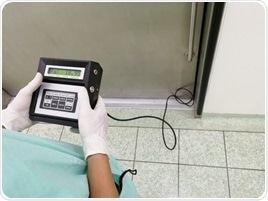
Figure 3. Measuring Air Pressure to Verify Seal Integrity. Image Credit: Superior Sensor Technology
Position insensitivity
Considerably beneficial for handheld applications such as room/building seal integrity testing, Superior’s innovative dual-die implementation with the HV210 and ND210 sensors preserves consistent and highly accurate readings irrespective of the physical orientation of the measurement device.
The HV210 and ND210 are best in class throughout the industry as they are rated with a positional sensitivity within 0.25 Pa, with respect to position insensitivity.
Integrated 50/60Hz notch filter
As all of Superior’s pressure sensors have an exceptionally low noise floor, power line interference is audible when taking measurements.
The integrated 50 Hz/60 Hz notch filter in the ND Series cancels out this noise, so the advantage of having such a low noise floor pressure sensor without any external interference is preserved. For further details, read the 50/60 Hz Notch Filter blog post on the Superior Sensor website.
Fastest warm-up and response times
For time-restricted applications, warm-up time is crucial. The ND Series effectively eliminates warm-up time as the device is operational in just 80 milliseconds. Moreover, the time it takes for the pressure sensor to update its measurement data is just as critical.
The faster that updated pressure measurements are received, the more accurate differential readings will be. While user-configurable, Superior’s ND sensors facilitate update rates as fast as 2.25 milliseconds.
Conclusion
Clean rooms and isolation rooms depend on differential pressure sensors for both positive and negative pressure rooms. In order to be effective, they must be able to sustain consistent air pressure and/or an extremely clean air environment.
Rapid, accurate pressure measurements provide verification that seals are tight and there is no leakage of air or contaminants.
Superior Sensor’s specialized differential pressure sensor technology, based on its proprietary NimbleSense architecture, offers a multitude of differentiating features that can help deliver the most reliable clean rooms and isolation rooms.
For additional information about Superior’s solutions, please visit the company’s HV Series product page, ND Series product page or contact Superior Sensor Technology today.
About Superior Sensor Technology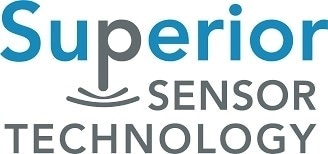
Superior Sensor Technology is an innovative, high technology company revolutionizing the high performance, cost driven pressure sensor market by developing integrative, highly intelligent solutions for industrial, HVAC and medical applications.
Our proprietary pressure sensor technology with advanced programmable software features enables customers to develop higher performing, more reliable equipment.
Superior Sensor Technology was founded in October of 2016 with a mission to bring Application Specific Sensors into the industrial, medical and HVAC markets.
Sponsored Content Policy: News-Medical.net publishes articles and related content that may be derived from sources where we have existing commercial relationships, provided such content adds value to the core editorial ethos of News-Medical.Net which is to educate and inform site visitors interested in medical research, science, medical devices and treatments.